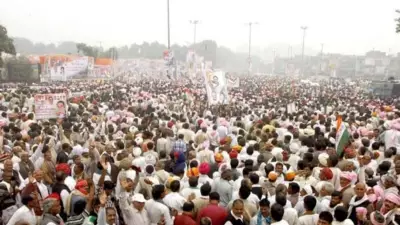
As winter descends upon North India, a familiar haze blankets the region, bringing with it urgent questions about how to combat the annual pollution crisis. While authorities scramble for solutions, a troubling pattern emerges: the growing reliance on technological quick-fixes that may be addressing symptoms rather than causes.
The Allure of Silver Bullets
Recent years have seen various technological interventions proposed as answers to India's persistent air quality problems. From artificial rain projects to massive smog towers, these solutions capture public imagination with their promise of immediate relief. IIT Kanpur's ambitious cloud-seeding project, requiring specific meteorological conditions and significant investment, exemplifies this trend toward complex technological approaches.
Yet environmental experts are raising uncomfortable questions. Are these flashy technological solutions merely creating an illusion of progress while allowing fundamental pollution sources to continue unchecked?
Masking the Real Issues
The fundamental problem with these artificial solutions lies in their temporary nature and limited scope. A smog tower might clean air in its immediate vicinity, but it does nothing to stop pollution at its source. Artificial rain might provide a day or two of clearer skies, but it doesn't address the year-round emissions that make such interventions necessary.
This approach risks creating what environmentalists call 'greenwashing' - the perception of environmental action without meaningful change. When the public sees government agencies investing in expensive technological fixes, they may assume the problem is being solved, reducing pressure for more comprehensive solutions.
The Root Causes Remain
Meanwhile, the primary sources of India's pollution continue largely unaddressed. Vehicle emissions, industrial pollution, construction dust, and agricultural burning persist as major contributors to the toxic air millions breathe daily. These require difficult policy decisions, behavioral changes, and sustained investment in cleaner alternatives.
The danger isn't that technological solutions have no place in environmental policy, but that they're being prioritized over more fundamental, systemic changes. When limited resources are directed toward expensive, unproven technologies, less glamorous but more effective solutions may be neglected.
A Balanced Approach Needed
Environmental advocates argue for a more balanced strategy that addresses both immediate relief and long-term solutions. Technology can play a role, but it should complement - not replace - efforts to tackle pollution at its source.
This means continuing to invest in public transportation, regulating industrial emissions more strictly, promoting cleaner agricultural practices, and enforcing existing environmental laws. Technological interventions should be evaluated not just on their immediate impact, but on whether they contribute to lasting improvement.
As India continues its battle for cleaner air, the question remains: Will we settle for artificial solutions that make us feel better temporarily, or will we muster the political and social will to create genuine, lasting change?





